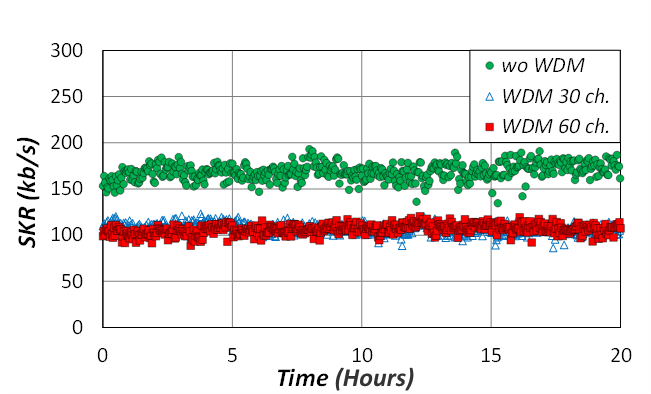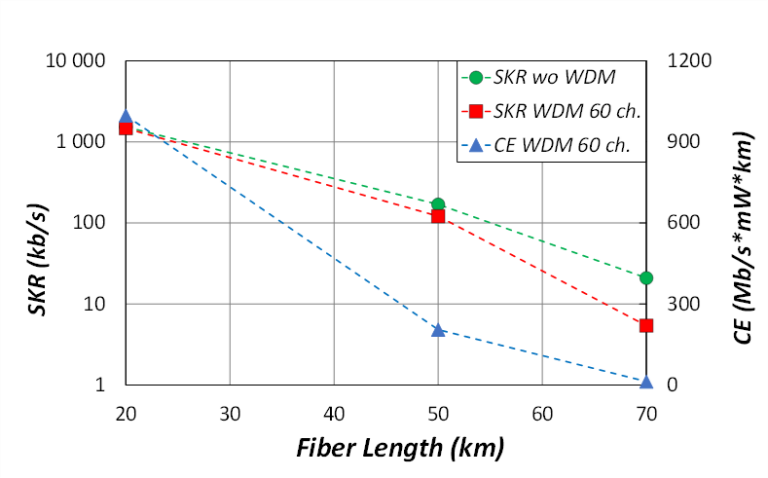Researchers from Toshiba Europe and global telecommunications operator Orange have demonstrated the viability of deploying quantum key distribution (QKD) on existing commercial networks to protect transmissions from being decrypted by quantum computers.
According to the collaborators, the findings have two key implications for the viability of using QKD to secure communications against attack by quantum computers at a commercial level. First, the development shows that the commercially available equipment evaluated by Toshiba and Orange is successful at allowing QKD to be more effectively deployed on current fiber networks. The findings stem from joint tests using Toshiba’s commercially available QKD technology.
Second, the metric developed by the researchers, which acknowledges that power and not the number of channels has the primary impact on efficiency, may aid operators in network and service planning.
The findings as a whole could help network operators reduce the cost of implementing QKD by removing the need to invest in dedicated quantum fiber infrastructure.

Toshiba’s commercially available quantum key distribution technology. Courtesy of Toshiba.
The continued advancement and commercialization of quantum computing poses security risks to current methods of public key encryption, which are likely to be rendered insufficient. Toshiba’s QKD aims to provide protection against the power of future quantum computers. Previously, this required network operators to invest in dark fiber across their network specifically for sending quantum information, increasing the cost and time to adoption.
Wavelength division multiplexing (WDM) makes it possible for QKD to operate on existing fiber networks by using spectral separation — using different wavelengths of light to avoid interference — to allow the quantum signal to coexist with an operator’s classical data signals. However, previous tests yielded issues that affect the viability of such deployments.
Toshiba and Orange began tests last year to validate the coexistence of QKD and classical data signals and study how different factors affect the efficiency of sending both classical and quantum signals over existing fiber networks running classical data services. The researchers demonstrated and evaluated a 1310-nm quantum channel multiplexed with up to 60 data channels (each carrying 100-Gbit/s bit rate) in the telecommunication C band across a commercially available Toshiba QKD system.


Graph showing that although the use of wavelength division multiplexing does reduce the secure bit rate, the number of channels has a minimal impact. Courtesy of Toshiba Europe/Orange.
The system’s novel design, which included high-extinction spectral filters and time-domain gating used to help isolate the quantum signal and reduce noise introduced from the classical channels, enabled the researchers to multiplex classical data while retaining excellent QKD performance.
Tests were run with both 30 and 60 multiplexed channels over 20-, 50-, and 70-km fiber lengths. The researchers measured the secure key rate (SKR) over the different distances to understand how effectively the system could successfully transmit quantum keys alongside classical data channels, as well as optical launch power of the data services. They found that the high number of WDM channels used in this evaluation had a minimal impact upon SKR. Instead, the researchers found that the aggregated data channel optical launch power used in the system was the most influential factor on the SKR and successful delivery of keys.
Orange and Toshiba proposed a new metric, co-propagation efficiency (CE), which can estimate the performance of the QKD system (its ability to deliver secure keys successfully with a good SKR) in a co-propagation regime while considering the total power of the classical channels and the transmission distances.

Graph showing that the new co-propagation efficiency (CE) metric reduces with distance, like the SKR. Courtesy of Toshiba Europe/Orange.
The results point to drastically reducing the amount of money necessary to invest in and maintain QKD services, as well as time to deployment.
The research was presented by Erwan Pincemin from Orange Innovation division in France at OFC 2023, held March 5-9 in San Diego (www.doi.org/10.48550/arXiv.2305.13742).